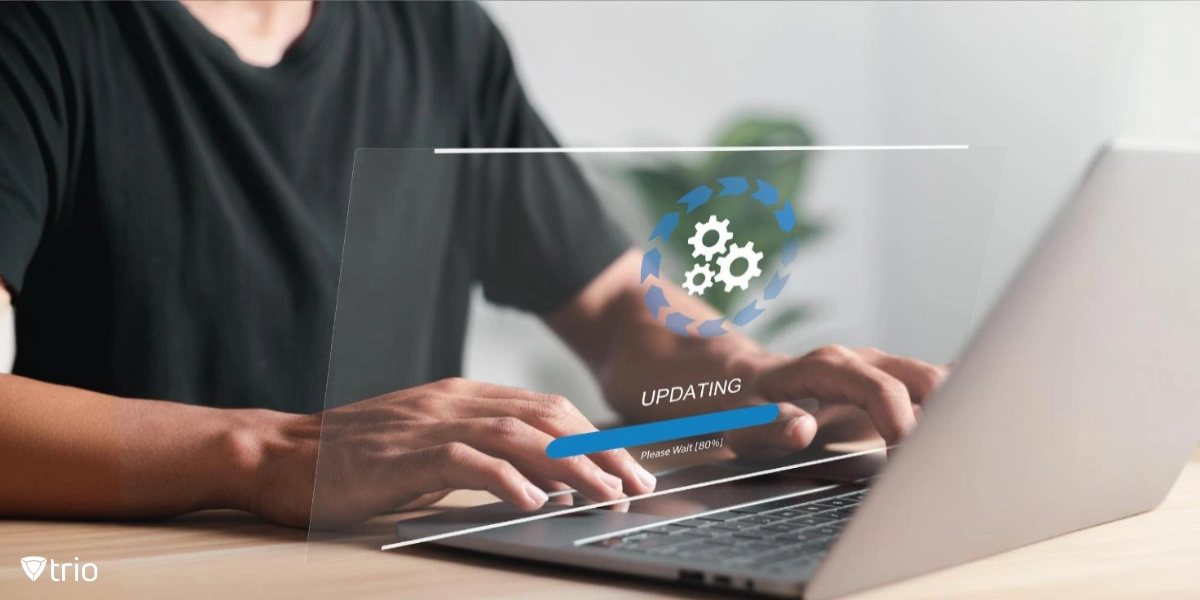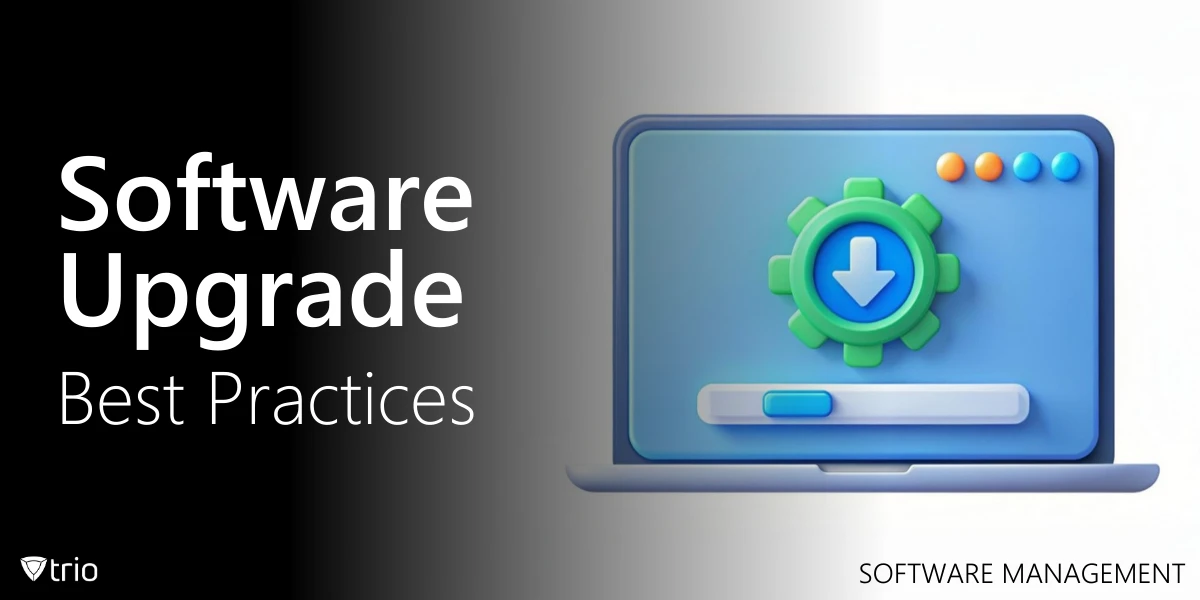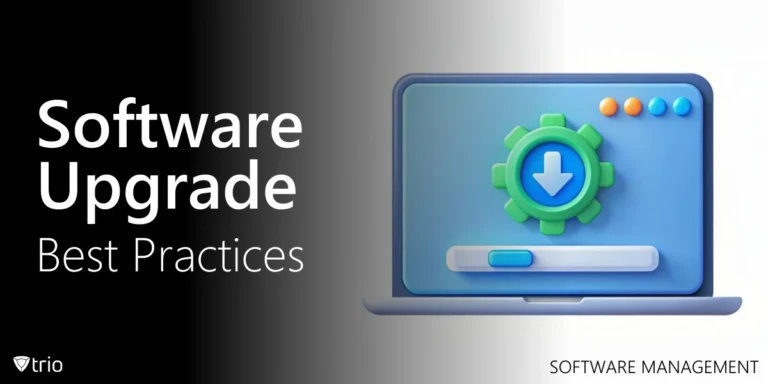Software updates often go unnoticed in a busy work environment. Yet their silent role in boosting efficiency and protecting data should never be taken lightly. This blog explores how software upgrade best practices, in tandem with MDM solutions, can revolutionize performance, security, and overall system reliability. It sets the stage for a thorough exploration.
Skipping timely updates often leads to missed security patches, glitchy functionality, and a mountain of unnecessary headaches. Companies small or large can face similar consequences if they delay maintenance. By briefly examining potential pitfalls, we highlight why staying ahead of software updates is a crucial step in keeping digital infrastructures healthy.
Over the next sections, we will walk through seven eye-opening best practices that reinforce stable upgrades and strong performance. Consider them a toolkit designed to tackle the nuances of evolving software demands. So let’s dive right in.
Importance of Software Updates
Software updates serve as a digital shield, keeping systems safe against emerging security threats. By sealing newly discovered holes, these patches prevent hackers from exploiting weaknesses that compromise valuable data. Consequently, regular updates extend the life of your technology investments and reduce the odds of crippling breaches. It’s like routine maintenance for your digital doors.
Beyond security, updates frequently enhance performance by refining code and smoothing out erratic behaviors. This translates into faster loading times, more responsive interfaces, and an overall improved user experience. Whether it’s a productivity suite or a creative design tool, better functionality empowers teams to work with minimal disruption.
Many upgrades also usher in new features, which can streamline workflows by automating tedious tasks. This constant evolution is often facilitated by IT management software to ensure that updates roll out smoothly across varied devices. In the long run, the right updates can spark innovations that drive productivity to new heights.
The High Stakes of Neglecting Upgrades
Overlooking updates can have dire consequences, from data breaches that cripple operations to compatibility issues that grind productivity to a halt. According to Gallagher Security, unpatched vulnerabilities were responsible for 80% of successful breaches in 2022—a stark reminder of why staying updated is critical for safeguarding your systems. Systems plagued by outdated components often falter under the weight of evolving digital demands. Neglecting routine patches can set off a chain reaction, leaving organizations scrambling to recover. It’s never worth the gamble.
Neglecting updates also inflates the complexity of future upgrades, as unresolved issues pile up and complicate remediation efforts. Worn-out software can become a bottleneck, choking the flow of new technologies and emerging trends. Recognizing these dangers, the following best practices aim to protect organizations from unwanted downtime and data catastrophes.

Best Practices for Software Upgrade
Armed with insights on why software upgrades matter, you’re now ready to dive into the core. Let’s unpack each practice that will secure reliability and stellar performance in every environment.
1. Comprehensive Pre-Upgrade Assessment
Before initiating any upgrade, always gauge your current environment. Taking inventory of software and hardware configurations not only clarifies compatibility but also uncovers hidden problem areas. By using a systematic checklist aligned with ITAM best practices, organizations can pinpoint resource allocation and avoid surprises down the line. It’s a proactive strategy.
Start by evaluating disk space, operating system prerequisites, and memory requirements. Document findings in a central repository to keep everyone on the same page. A thorough pre-upgrade assessment saves time, reduces guesswork, and lays the foundation for a smoother transition into the next stage of the upgrade process.
2. Plan With a Change Management Strategy
Creating a solid plan is crucial for outlining each upgrade phase from start to finish. Think of it like mapping out every turn before a long road trip, anticipating pitfalls and charting detours. Without such foresight, you risk confusion, missed deadlines, or even catastrophic rollback scenarios.
Documenting potential risks and backup plans forms the backbone of effective change management. Incorporating configuration management principles further refines the process by maintaining consistent settings across your infrastructure. With detailed milestones and assigned roles, everyone stays in sync, paving the way for a seamless software upgrade journey.
3. Backup and Redundancy Measures
Before greenlighting any major upgrade, be sure you have backup protocols. Regularly scheduled backups give you a fallback plan if something goes awry during deployment. Whether it’s a small patch or a system-wide update, a reliable backup can mean the difference between a minor hiccup and a major crisis.
Redundancy measures like secondary servers or cloud-based replicas also minimize downtime in critical scenarios. By distributing data across multiple locations, you gain an extra layer of insurance against hardware failures and cyberattacks. In a world of unpredictable threats, redundancy isn’t just an option—it’s a vital safeguard for business continuity.
4. Staged Rollouts and Testing
Rolling out upgrades in smaller phases helps catch snags before they escalate. Test environments let you replicate real-world conditions and detect compatibility issues early. This cautious approach lowers the likelihood of system-wide chaos, making it easier to isolate and fix problems without impacting the entire operation.
For larger organizations, a bulk deployment strategy can streamline the process once initial tests prove successful. By grouping updates, you avoid piecemeal rollouts that might otherwise drag on for weeks. The result is a faster, more efficient transition that allows teams to resume normal workflows with minimal disruption.
5. Monitor Performance Metrics
Keeping an eye on performance metrics is critical during and after an upgrade. Resource usage, system logs, and error reports help you assess whether the update meets objectives or triggers new problems. Real-time monitoring tools can alert you to bottlenecks, letting you fix them before users even notice.
Over-the-air update capabilities enhance this process by allowing quick distribution of fixes and patches across devices. Instead of manually applying corrections, you can address system flaws immediately based on the insights gathered from metrics. This agility boosts reliability, minimizes manual labor, and keeps disruptions to a bare minimum.
6. Documentation and Training
Every upgrade should be accompanied by well-structured documentation covering the whats, whys, and hows of each change. From new shortcuts to revised interfaces, people need clear instructions to adapt quickly. A thoroughly documented process reduces the learning curve and helps teams move forward without stalling productivity.
Just as vital is training, whether through quick video tutorials or concise user guides. Employees are more willing to embrace fresh features if they’re confident in their ability to navigate them. By investing time in instruction, you’ll see fewer help-desk tickets and more motivated, self-sufficient users. Knowledge truly empowers everyone.
7. Continuous Review and Optimization
Upgrading software isn’t a one-and-done event—it’s a cycle that demands constant attention. Conduct post-upgrade reviews to measure whether performance goals were actually met. These evaluations reveal gaps, offering tangible insights for refining your strategy and ensuring that every update delivers a measurable boost to the organization.
Remain open to adopting industry best practices as they evolve, since technology rarely stays stagnant for long. Regularly revisiting your plan keeps your organization poised for success rather than stuck in the past. In the ever-changing digital landscape, optimization ensures every upgrade remains as effective tomorrow as it is today.

Trio: Your Secret Weapon for Smooth Upgrades
MDM (Mobile Device Management) is a strategic framework that simplifies software rollouts and ongoing maintenance for all devices in your network. Our solution, Trio, integrates seamlessly with these best practices by automating updates across varied platforms. It’s designed to enhance security, lower downtime, and keep systems running at peak.
By blending the principles highlighted in the previous sections with a strong MDM approach, Trio enables you to stay ahead of threats and operational hiccups. It provides real-time insights, accelerates patch management, and centralizes oversight. Explore our free demo to witness firsthand Trio’s ability to significantly simplify your upgrade processes.
See Trio in Action: Get Your Free Trial Now!
Conclusion
Following these software upgrade best practices dramatically cuts the risk of vulnerabilities and downtime. Once you establish a sound plan, each update cycle becomes less daunting and more rewarding. From better performance to advanced security, the benefits extend across every facet of your digital ecosystem.
Adopting a thoughtful, step-by-step approach transforms software upgrades from a tedious chore into a strategic advantage. With each iteration, you strengthen your infrastructure and sharpen your competitive edge. Embrace these guidelines wholeheartedly, and you’ll discover that consistently updated systems pave the way to exceptional performance and peace of mind.




